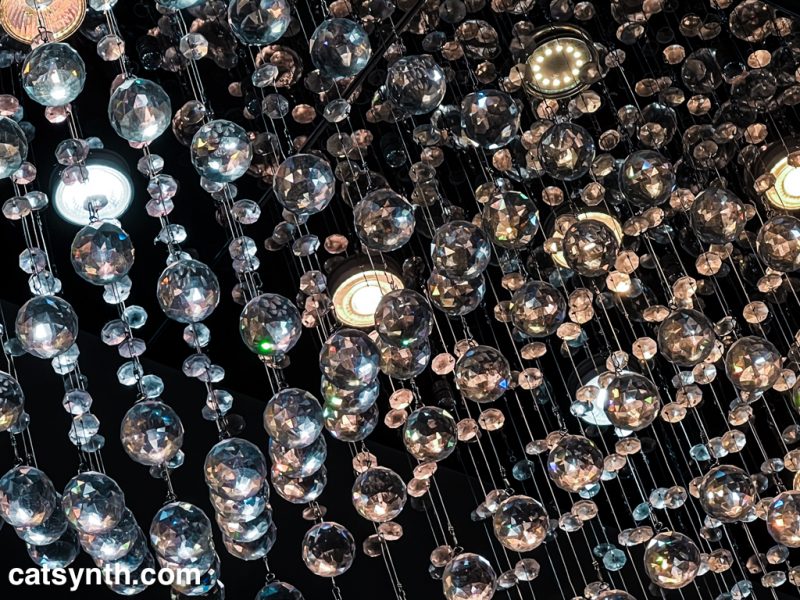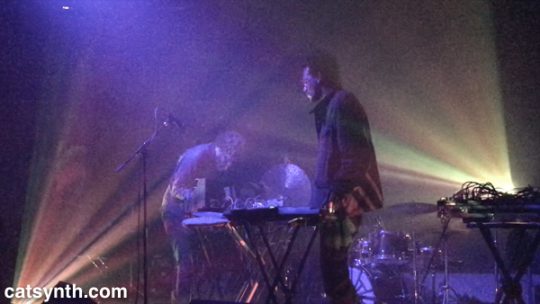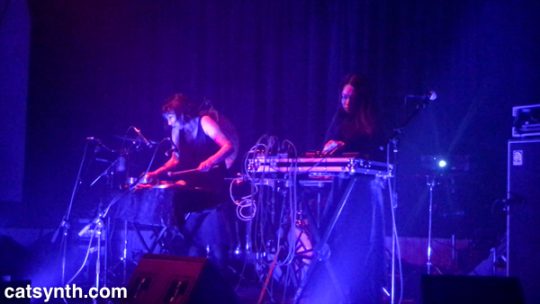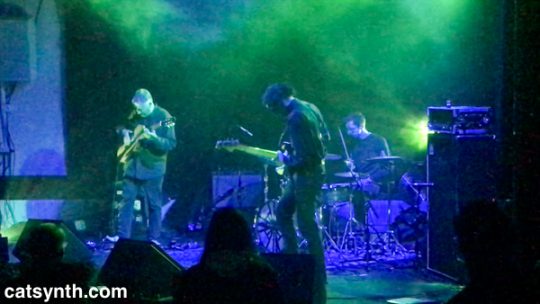
lighting
Fred Frith Trio, IMA and Watkins / Peacock at Starline Social Club, Oakland
Today we look back at the December show at the Starline Social Club featuring the Fred Frith Trio, IMA, and Watkins / Peacock. It was the subject of a recent episode of CatSynth TV.
In addition to giving a great interview, Zachary Watkins performed a great set with collaborator Ross Peacock, featuring a large array of electronic gear, with interesting rhythms, harmonies, and timbres throughout. The largely improvised set included several patterns and patches from Watkins as well as solo work by Peacock on a vintage Korg MS-20.

IMA, the duo of Nava Dunkelman and Jeanie Aprille Tang (aka Amma Ateria) provided a very different sound and style combining percussion and electronics.

The timbres of Nava Dunkelman’s percussion and Tang’s electronics complement each other, with the electronics weaving between the frequency ranges and timbres of the percussion. This worked especially well with the metallic sounds. Having played together as a unit for a while now, IMA’s improvised sounds have a tight structure and narrative quality.
Then it was time for the Fred Frith Trio to take the stage. In addition to Frith, the trio features Jason Hoopes on bass and Jordan Glenn on drums.

Like IMA, the trio locked in even in more free-form improvised sections to maintain a rhythmic and virtuosic quality. They have developed a musical language among the three of them that allows them to converse and also listen during “monologues”, like Frith’s solos or Hoopes’ dramatic bass patterns.
We had a great time at this show – the Starline is a good place to see live music. The stage lighting was almost a performer in its own right, constantly changing and adapting to the music. The fog could have been a bit lighter, though.
Double Vision: Hysteresis
A couple of weekends ago, I attended the premier of Hysteresis, a performance described as “70 minutes of non-stop, innovative dance, sound, lights, and costumes informed by a residency at the Museumsquartier in Vienna, Austria.” It was a production of Double Vision, a group known for performances combining dance, music and technology, and took place at Dance Mission Theater here in San Francisco.

[Photo courtesy of Double Vision. Click to see larger version.]
Hysteresis explored the theme of “being alien or observing that which is alien to oneself.” However, for me the performance did not feel alien at all. Indeed, each of the artists’ approach to alien-ness via dance, music, choreography and lighting ended up creating something that felt familiar for me and comforting in its sparseness. The choreography had a feel of individuals going about their business in a city environment, sometimes moving about in wildly different directions, sometimes very static. The lighting had a very geometric and architectural feel. The dancers’ costumes also had an architectural or industrial quality and consisted of simple tunics stitched together from geometric gray and black swatches of cloth and black leggings.
The music held together these elements with industrial and percussive sounds punctuated by references to popular music idioms, as one might hear passing buildings and cars in between traffic and construction. It started with short percussive notes, mostly struck metal and block. At first the sounds were very sparse but later on they formed into complex polyrhythms, sometimes with more standard percussion instruments like kick drums and snare drums mixed in. The sparse texture was interrupted by other sections of music, such as short samples from big-band music, classical (or classically inspired) string music, and passages that sounded like show tunes or brass bands. It was not clear these were found musical objects or composed from sratch. Towards the climax of there piece, there were more sounds that one might consider more “electronic”, such as noise, synthesizer sweeps and sub-bass tones. However, even as the idioms and timbres changed and the music became quite dense, the sparse rhythmic texture from the beginning of the piece kept going, like machinery of a city that never stops. Or almost never stops – there were a few moments where it cut out entirely, and the silence was quite startling.

[Photo courtesy of Double Vision. Click to see larger version.]
The often sparse texture of the music allowed one to focus more on not only the movements of the dancers, but also the sounds they made in terms of the movement of their bodies and breathing. After one particularly loud section everything fell silent, the dancers moved off stage, and one rectangular patch of light kept flickering. This light seemed to be of particular significance (it was the only one that cast a rectangular shape) and appeared occasionally throughout the piece.
The final section began with what sounded like machine or car sounds and moved towards what sounded like an elegant party with piano music, and the faded to silence. It was a strange ending after the very industrial sound throughout the rest of the piece, but it provided an interesting contrast.
Choreography for the piece was by Pauline Jennings, music by Sean Clute, lighting design by Ben Coolik, and costume design by Andrea Campbell.
